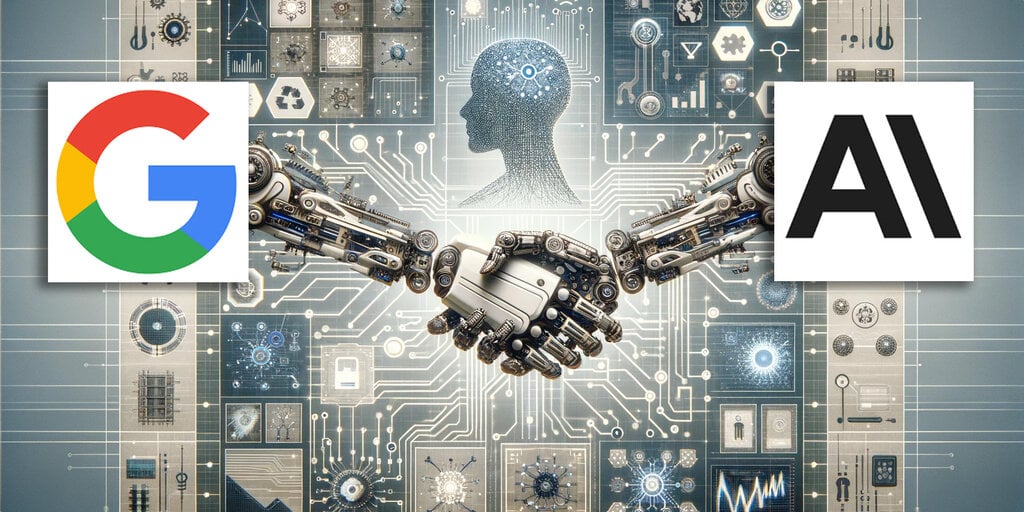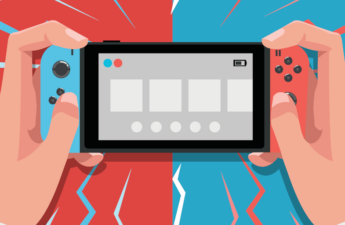Google is forging a deeper alliance with Anthropic, the startup behind ChatGPT competitor Claude AI, by providing its specialized computer chips to boost its capabilities.
This partnership is fortified by a substantial financial infusion from Google to Anthropic. As Decrypt previously reported, Google’s commitment featured a 10 percent stake acquisition for $300 million followed by additional funding, totaling a significant $500 million—with a further promise of $1.5 billion in additional investments.
“Anthropic and Google Cloud share the same values when it comes to developing AI–it needs to be done in both a bold and responsible way,” said Thomas Kurian, CEO of Google Cloud, in an official press release. “This expanded partnership with Anthropic, built on years of working together, will bring AI to more people safely and securely, and provides another example of how the most innovative and fastest growing AI startups are building on Google Cloud.”
Anthropic will use Google Cloud’s fifth-generation Tensor Processing Units (TPUs) to perform AI inference, the process by which a trained AI model makes predictions or decisions based on new input data.
Such strategic moves by tech leaders underline the fierce competition and high stakes in developing ever-more sophisticated artificial intelligence. The most notable partnership in the AI space is the one between Microsoft and OpenAI with $10 billion on the table.
But what do these technological developments portend for the AI chatbots and tools people use daily? It comes down to the fundamental differences between the computational workhorses of AI training: GPUs and TPUs.
Graphics Processing Units (GPUs), long the backbone of AI computational tasks, are adept at handling multiple operations simultaneously. They are versatile and widely used, not just in gaming and graphics rendering but also in accelerating deep learning tasks.
In contrast, tensor Processing Units (TPUs) are Google’s brainchild, custom-designed to turbocharge machine learning workflows. TPUs streamline specific tasks, offering swifter training times and energy efficiencies, which are critical when processing the enormous datasets that LLMs like Anthropic’s Claude require.
The distinction between these processors is stark: GPUs (like the ones used by OpenAI) offer a broad application scope, but TPUs focus performance on machine learning. This suggests that for startups like Anthropic, which rely on massive volumes of data to refine their models, Google’s TPUs may provide a compelling advantage, potentially leading to quicker advancements and more nuanced AI interactions.
On the other hand, OpenAI’s recent advancements, particularly the GPT-4 Turbo, challenge any perceived lead by Anthropic. The brand new Turbo model handles 128K context tokens, which is a significant leap from the previous 8K milestone and a blow to Anthropic’s prior dominance with Claude’s 100K capabilities.
However, the battle is not without its nuances. These powerful TPUs could help Anthropic develop a more powerful LLM faster. But the larger context window, while interesting, is a double-edged sword—those huge prompts tend to lead to poor performance under current circumstances.
As the AI race heats up, Anthropic may now hold a golden ticket thanks to Google’s hefty backing. But they’ve got to play their cards right because OpenAI isn’t just resting on its laurels—they’re also on the fast track with Microsoft in their corner.
Edited by Ryan Ozawa.
Stay on top of crypto news, get daily updates in your inbox.
Source: https://decrypt.co/205397/google-and-anthropic-are-gunning-for-ai-dominance-with-new-chips



